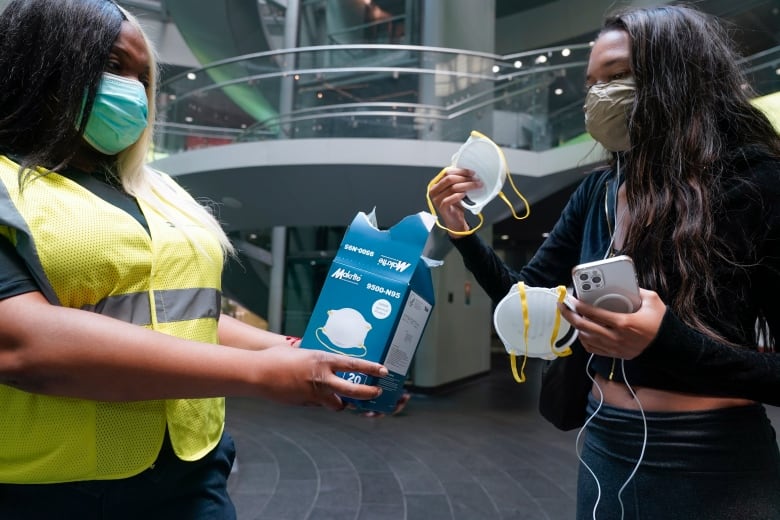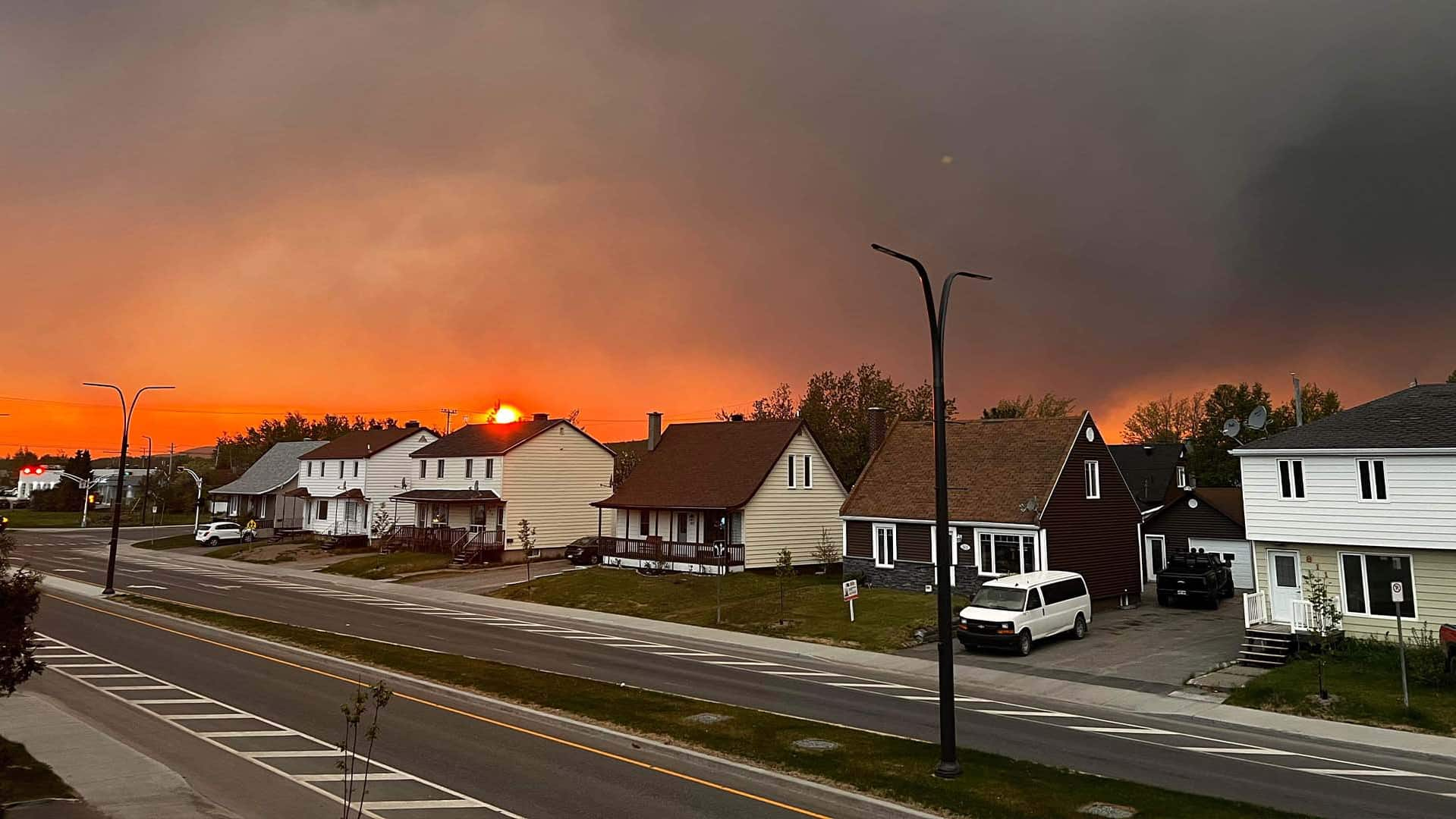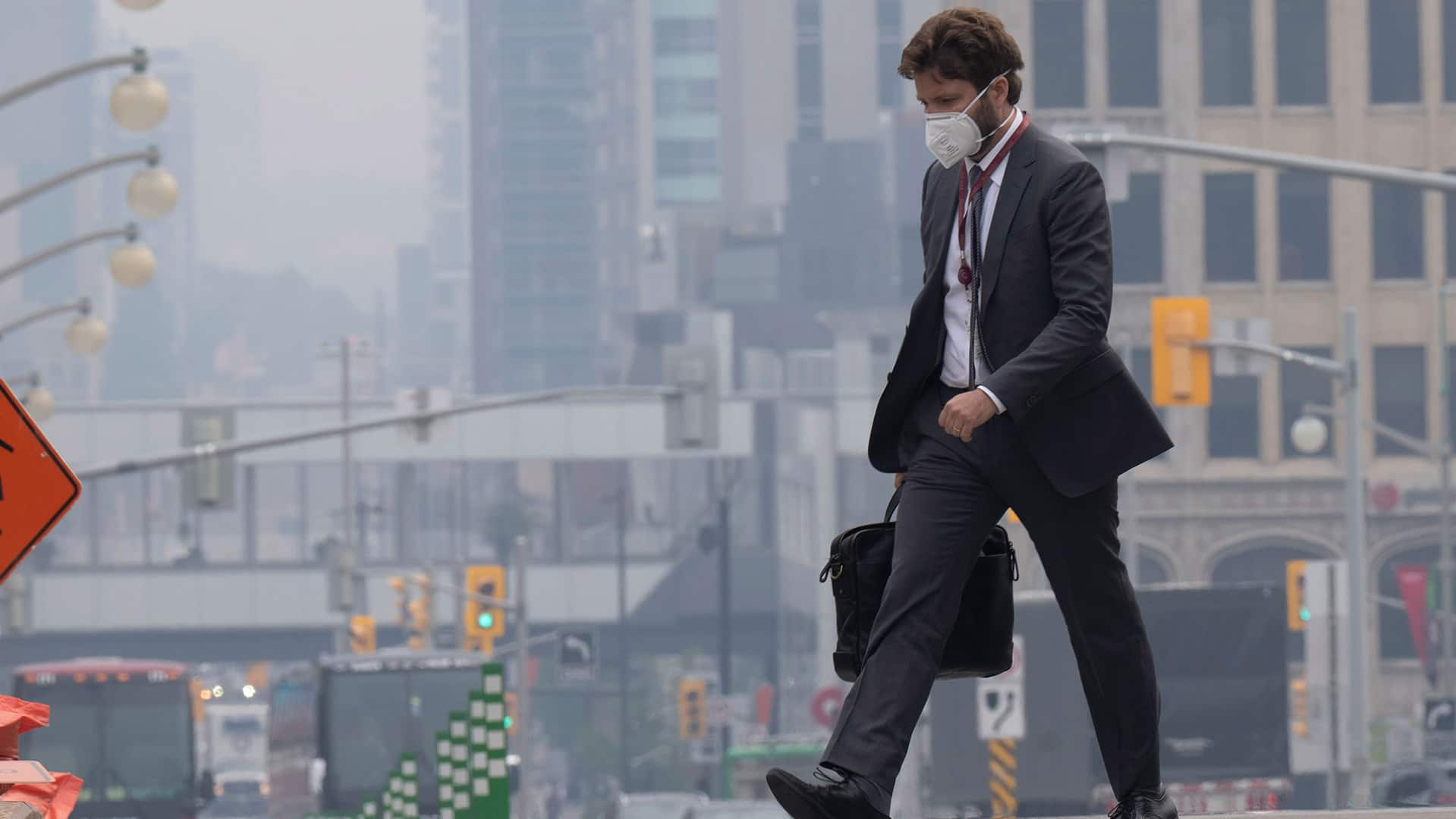How we measure air quality and what the numbers mean
From AQHI to PM2.5, here's a primer on the charts and figures used during wildfire season

The wildfire smoke hovering over parts of eastern Canada and the U.S. this week has led many to start poring over charts and figures to get a sense of the air quality in their area.
But what exactly do these indexes measure, and how should they be interpreted?
Different countries have different ways of measuring air quality, including Canada, said Dan Westervelt, an associate research professor at Columbia Climate School's Lamont-Doherty Earth Observatory.
There is some variability between the indices used by countries, but he says they generally measure similar elements in the air.
Here's a quick primer.
How does Canada measure air quality?
Canada uses what's called the Air Quality Health Index (AQHI), a measurement designed to make it easier for the public to understand the level of risk involved.
There are 286 measuring sites in a total of 203 communities across the country, according to the federal government.
The index measures health effects associated with air pollution on a simple scale of one to 10+, with 10 and anything above being the worst. The AQHI takes into account the following pollutants: ground-level ozone, particulate matter and nitrogen dioxide. All three are found in wildfire smoke.
How do I read the scale?
The index was designed to inform the public about the "health risk from air pollution on any given day," according to Health Canada.
Anything between seven and 10 is considered "high risk." At that point, Environment Canada advises the public to consider reducing strenuous outdoor activities.
A measurement above 10 is considered "very high risk."
In those circumstances, Environment Canada advises the general population to reduce or reschedule strenuous outdoor activities and recommends that at-risk populations, such as young children, seniors and those with chronic conditions, avoid strenuous activities altogether.
You can find the level of air quality in your area here.
Why are U.S. numbers in the hundreds?
The U.S. uses a different scale of measurement, with a much higher range. The Air Quality Index (AQI) is based on air quality standards and is measured from 0 to 500. The higher the value, the greater the level of air pollution.
The AQI measures particle pollution, carbon monoxide, sulfur dioxide and nitrogen dioxide. All these are also found in wildfire smoke.
An AQI value of 50 or below represents good air quality, while an AQI value over 300 represents hazardous air quality.
On Wednesday, AQI measurements exceeded 400 at times in Syracuse, New York City and Pennsylvania's Lehigh Valley. On an average day in recent years, New York City's AQI has remained less than 50, or "good."
Those figures, and the eerie photos of hazy U.S. landmarks, has generated an unusual amount of interest in a topic that rarely gets top billing.
"The amount of coverage and news over the last few days in New York and D.C. and all these big cities has been really, really unprecedented," Westervelt said, noting that he could not recall the air quality index ever before being a topic of discussion on CNN.
"I think sometimes these stories can be a bit fleeting, but the fact that this hit New York City so heavy and so hard, I think is going to be a motivating factor that can get people engaged and and more ready to take action on air quality."
What about PM2.5?
The small particles that result from wildfires are a source of concern for health experts. Both AQI and AQHI measure the amount of fine particulate matter with a diameter of 10 microns or less.
PM2.5 is even smaller, measuring 2.5 microns or less in diameter — that's roughly 30 times smaller than the diameter of a human hair.
At that size, the particles can potentially be inhaled deep into the lungs and into the bloodstream, causing problems in particular for those with underlying conditions, said Dr. Samir Gupta, a respirologist and an associate professor of medicine at the University of Toronto.
What can you do to stay safe?
Environment Canada says air quality and visibility due to wildfire smoke can vary over short distances and from hour to hour, and advises the public to monitor the air quality in their area.
If levels are high, you may want to modify your behaviours. This could mean choosing not to exercise outdoors or staying inside with doors and windows closed and an air purifier running.
If you must spend time outdoors when AQHI is high, experts say wearing a well-fitted N95 mask can help.

Chris Carlsten, a professor and head of respiratory medicine at the University of British Columbia, had a simple suggestion: follow the public health guidelines, and use your own common sense.
"People are all different, ages are all different, circumstances are all different," he said. "It's a combination of these guidelines, but also learning one's own individual tolerance based on experience."
A more detailed set of recommendations about what to do can be found here.




